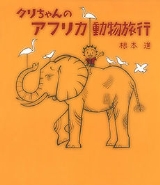
Kuri-chan
Encyclopedia
is a yonkoma
manga
series by Susumu Nemoto which ran from October 1, 1951 to March 31, 1965 in the Asahi Shimbun
evening edition. Nemoto modeled the main character, Kuri-chan, after his oldest son who was born in 1948. The name of the main character is actually , and gets his nickname from his naturally "kuri kuri" (or "curly") hair. The manga is unusual in that, other than the images, it relies almost exclusively on onomotopeia rather than words to tell the story.
The manga depicts the life of a typical salaryman
fairly accurately, but the main character becomes the salaryman's child, Kuri-chan. Because of this, there have been several picture book
s published, marketed at children, several of which are still in print as of 2008. A large amount of character goods featuring Kuri-chan continue to be produced as well.
In the last manga strip released, the first panel shows Kuri-chan at age one, the second at age five, the third at age fourteen, showing his growth and progression through the fifteen years of publication. The fourth panel, Kuri-chan gets annoyed at the manga author, Nemoto, for pointing out the details of how he looked at those ages.
Yonkoma
thumb|right|150px|Traditional Yonkoma layout, a comic-strip format, generally consists of gag comic strips within four panels of equal size ordered from top to bottom...
manga
Manga
Manga is the Japanese word for "comics" and consists of comics and print cartoons . In the West, the term "manga" has been appropriated to refer specifically to comics created in Japan, or by Japanese authors, in the Japanese language and conforming to the style developed in Japan in the late 19th...
series by Susumu Nemoto which ran from October 1, 1951 to March 31, 1965 in the Asahi Shimbun
Asahi Shimbun
The is the second most circulated out of the five national newspapers in Japan. Its circulation, which was 7.96 million for its morning edition and 3.1 million for its evening edition as of June 2010, was second behind that of Yomiuri Shimbun...
evening edition. Nemoto modeled the main character, Kuri-chan, after his oldest son who was born in 1948. The name of the main character is actually , and gets his nickname from his naturally "kuri kuri" (or "curly") hair. The manga is unusual in that, other than the images, it relies almost exclusively on onomotopeia rather than words to tell the story.
The manga depicts the life of a typical salaryman
Salaryman
refers to someone whose income is salary based; particularly those working for corporations. Its frequent use by Japanese corporations, and its prevalence in Japanese manga and anime has gradually led to its acceptance in English-speaking countries as a noun for a Japanese white-collar...
fairly accurately, but the main character becomes the salaryman's child, Kuri-chan. Because of this, there have been several picture book
Picture book
A picture book combines visual and verbal narratives in a book format, most often aimed at young children. The images in picture books use a range of media such as oil paints, acrylics, watercolor and pencil.Two of the earliest books with something like the format picture books still retain now...
s published, marketed at children, several of which are still in print as of 2008. A large amount of character goods featuring Kuri-chan continue to be produced as well.
In the last manga strip released, the first panel shows Kuri-chan at age one, the second at age five, the third at age fourteen, showing his growth and progression through the fifteen years of publication. The fourth panel, Kuri-chan gets annoyed at the manga author, Nemoto, for pointing out the details of how he looked at those ages.

